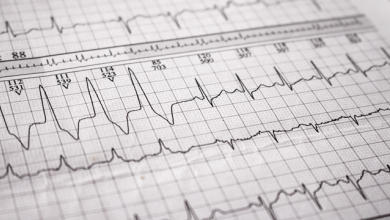Search results
Author(s):
Steven M Markowitz
,
George Thomas
,
Christopher F Liu
,
et al
Added:
3 years ago
Pioneering electrophysiology studies in the 1990s defined the anatomical boundaries of typical atrial flutter, identified regions for effective catheter ablation of this arrhythmia and described procedural endpoints to minimise recurrences after ablation. Activation and entrainment mapping demonstrated that typical flutter arises from reentry around the tricuspid annulus.1 Criteria to confirm…
View more
Author(s):
Emmanuel Koutalas
,
Borislav Dinov
,
Sergio Richter
,
et al
Added:
3 years ago
Since the introduction of electroanatomical mapping (EAM) into clinical practice in 1997, remarkable progress has been made in catheter infrastructure, signal recording and processing, catheter guidance and visualisation and simultaneous real-time depiction and processing of different types of critical information during an ablation procedure.1 The latter, along with the comprehension of the…
View more
Ventricular Tachycardia Isthmus
Author(s):
Ruairidh Martin
,
Meleze Hocini
,
Michel Haissaguerre
,
et al
Added:
3 years ago
Article
Author(s):
Takumi Yamada
,
G Neal Kay
Added:
3 years ago
Idiopathic ventricular arrhythmias (IVAs) usually originate from the specific anatomical structures. For the past decade, major IVA origins from both endocardial and epicardial sites have been increasingly recognised (see Table 1).1–3 Catheter ablation of IVAs is usually safe and highly successful, but can sometimes be challenging because of the anatomical obstacles. Therefore, understanding the…
View more
Author(s):
Raphael K Sung
,
Penelope A Boyden
,
Satoshi Higuchi
,
et al
Added:
2 years ago
Author(s):
Henry Chubb
,
John Whitaker
,
Steven E Williams
,
et al
Added:
3 years ago
Atrial Septal Defects and Patent Foramen Ovale
Nomenclature
The atrial septum is a complex structure, with the true septum comprised of two layers containing a potential flap valve. The septum primum extends from caudal to cranial within the atria, on the left side of the septum secundum. The septum secundum is a crescent-shaped infolding of the atrial roof, extending from the anterosuperior…
View more
Body Surface Electrocardiographic Mapping for Non-invasive Identification of Arrhythmic Sources
Author(s):
Ashok J Shah
,
Meleze Hocini
,
Patrizio Pascale
,
et al
Added:
3 years ago
Article










